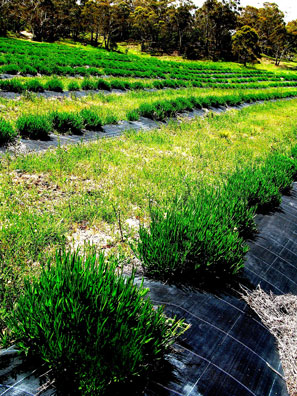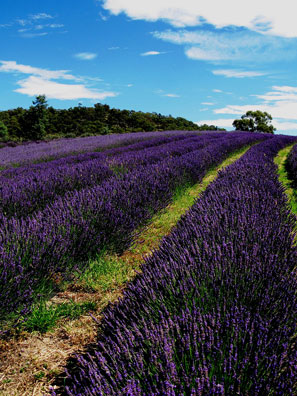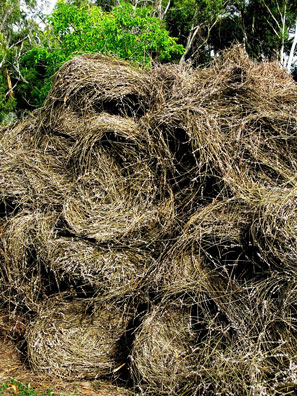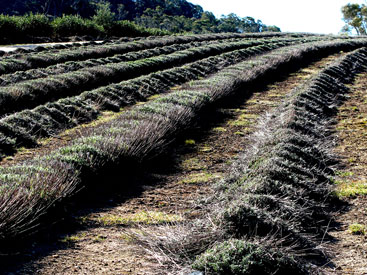

Wingless grasshoppers are plentiful in the lavender fields during the summer months. In a bio-diverse environment they do no harm and while I am sure there is a good reason for their attachment to this plant it often seems like they just enjoy the smell. Insects are very much part of a balanced farm ecology, they are food for reptiles, birds and small animals and then there are the bees whose benefits to our production are irreplaceable. Needless to say on an ecological farm insecticides are never an option.
INFLUENCES IMPORTANT IN SHAPING SNOWY RIVER LAVENDER
Underpinning farm development at Snowy River Lavender are the concepts of: ecological nurture and preservation through sensitive and observant participation in the environment in which we farm and live; the nurture of a ‘living soil’ away from external inputs; and, the production of essential oils true to their origins in this environment. The following are some of the agricultural influences which are helping us to achieve our goals.
ECOLOGICAL FARMING
- Ecological styles of farming see farm production as part and parcel of a custodial relationship to land which is ecologically complex. From this perspective the farm production resides alongside an understanding and nurturing of the biological diversity that already exists in the ‘natural’ environment (topography, flora and fauna). The farm is acknowledged as part of a much larger living system.
- Farming becomes strategic, designed through observation and adaption with the aim of building resilience into the natural systems of fertility and hydration and away from a dependency on external inputs including fertilisers and irrigation. This is a bespoke attitude to farming, not a ‘one size fits all’ model.
- In this system the specifics of landscape, the geography, the indigenous flora and fauna, are cast as important to the productive cycle of a farm as whole. The inherent biodiversity of the natural world is a balancing mechanism through which the cultivated farm receives nurture and relief. Instead of land clearing as per most agriculture, re-vegetation in the form of hedging and land restoration is an integral part of farm activity.
- A key luminary in this holistic approach to farming and land restoration is Peter Andrews. His pioneering methodology of Natural Sequence Farming highlights the role of landscape patterns in land hydration; and, places great importance on permanent vegetation and ground cover in managing the landscape. Specially lauded by him are the pioneering capabilities of plants including weeds in restoring and managing soil nutrients, water and the carbon cycle. Select Publications:
Andrews, P. (2006) BACK FROM THE BRINK: How the Australian landscape can be saved. Sydney ABC Books Andrews, P. (2008) BEYOND THE BRINK: Peter Andrews’ radical vision for a sustainable Australian Landscape, Sydney ABC Books - Mulloon Creek Natural Farms is a working example of Peter Andrew’s Natural Sequence Farming and an experimental farm which seeks to draw together many different natural approaches to farm production including biodynamics and permaculture. Mulloon Institute, founded by Tony Cootes, is the very active research wing of the farm and seeks to explore possibilities, experiment and educate for a better future of land use in Australia.
‘TERROIR’ - THE ‘SPECIALTY OF PLACE’ IN BESTOWING CHARACTER TO WINE
‘Old world’, and premium wine making, use the French word ‘terroir’ to denote the ‘speciality of place’, the importance of how the landscape binds with the vines to produce qualitatively distinct wine. Indeed, the concepts of provenance and vintage in wine making, is a celebration of what is biologically and climatically possible from that ‘special place’. It is the site of origin which gives agricultural product character and authenticity. Our approach to essential oil production is dedicated to a similar sensitivity to the distinctiveness of place and how this produces natural variance in the essential oils.
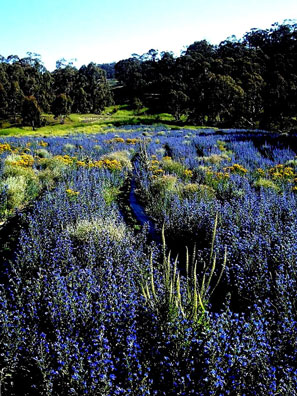
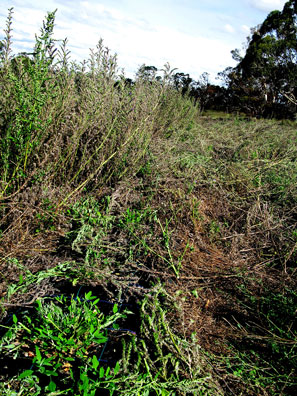
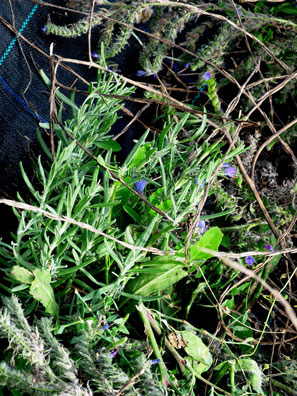

BIODYNAMIC AGRICULTURE
Seminal in the 1924 lectures of Rudolf Steiner, biodynamic agriculture centralises the concept of a ‘living soil’ as a jointly cosmic and earthly ecology. Plants through their dependent metabolic processes; transpiration and photosynthesis; and, by way of their integral place in both the carbon cycle and the development of soil humus; critically and naturally bind the ethereal sphere of sunlight, air, water, cosmic rhythms (climate & seasons); and, the earthly ecology of animals, minerals and biological processes of growth and decay. The understanding and nurture of these connections are fundamental to natural or ‘organic’ farm fertility. As Podolinsky, states, it is ‘farming within the organisation of nature, and that is not only what goes on in the soil’ (2004, p.32). Biodynamics is a comprehensive set of specific practices through which the farm as a complete ecology is nurtured and sustained. Some influential Australian exponents of biodynamics are:
- Alex Podolinsky, who has been a critical figure in developing the biodynamic method for Australian conditions and for large scale agriculture. His, BIO DYNAMIC AGRICULTURE, INTRODUCTORY LECTURES, VOL 1 & 2 (Gavemer 2004, 6th Ed.), are a helpful way of coming to terms with the subtleties of this approach. Available through Biodynamic Growing.
- Hamish Mackay and John Priestly make biodynamic philosophy and practice accessible to everyone through experience based workshops and consultancy. www.biodynamics2024.com.au
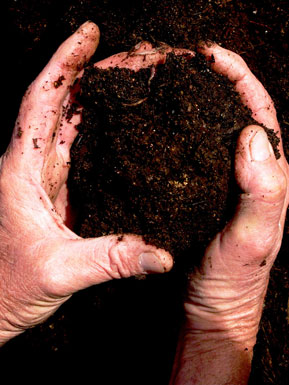
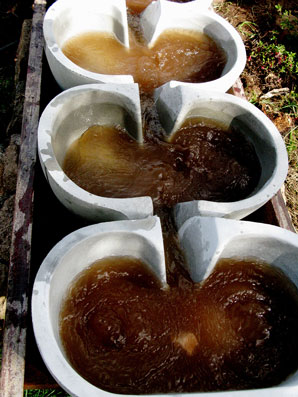
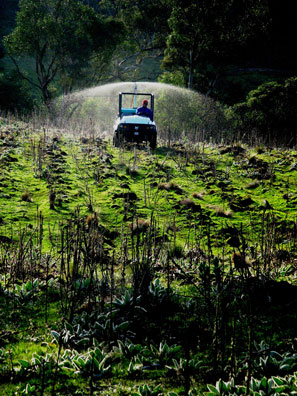
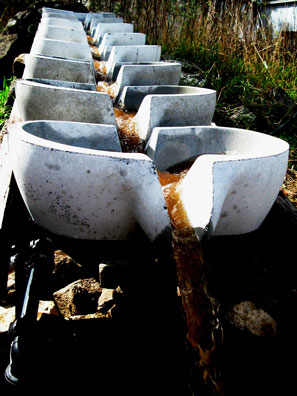
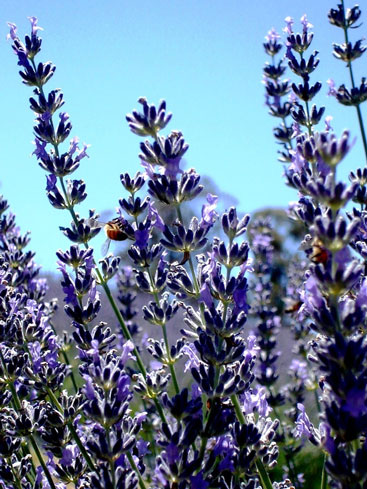
ORGANIC AGRICULTURE
Generically, organic means a living and self sustaining system, continuously capable of developing out of its self through processes of growth and decay. In this way it has influenced the way we have developed our agricultural practice around a concept of a ‘living soil’, farm ecology and low inputs. Organic is now mostly used as a legal term commercially associated with specific certifying organisations and their respective standards for agricultural and industrial practice. We have not gone through certification, so it is not legal for us to tag our farm ‘organic’ or ‘bio-dynamic. Key organic certifiers are Australian Certified Organic (ACO) and the National Association for Sustainable Agriculture Australia (NASAA). They are also mediate bio-dynamic certification, as does The Bio-Dynamic Research Institute, who mediates the prestigious Demeter Certification, based on the Podolinsky developed Australian Demeter Bio-dynamic Method and Standards.
